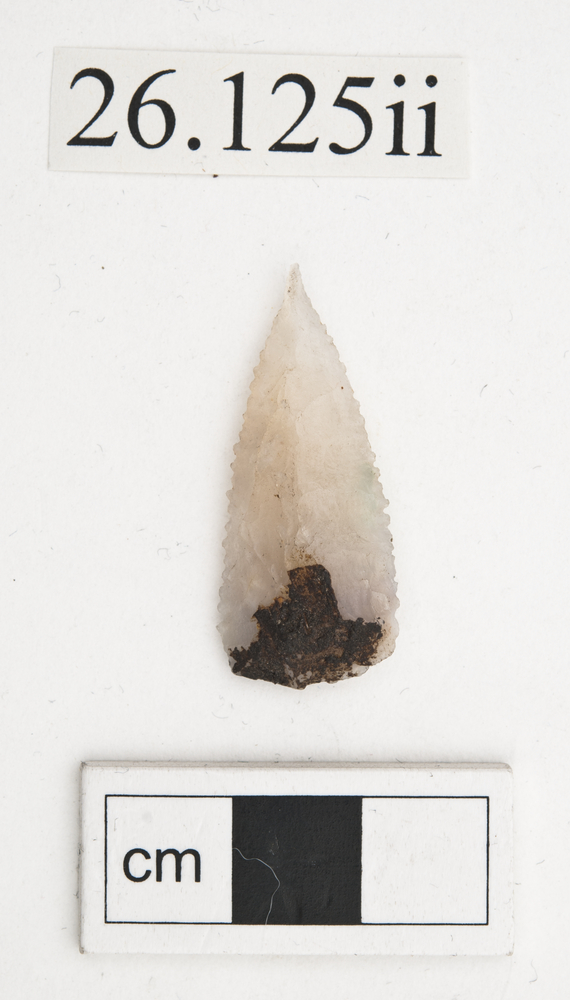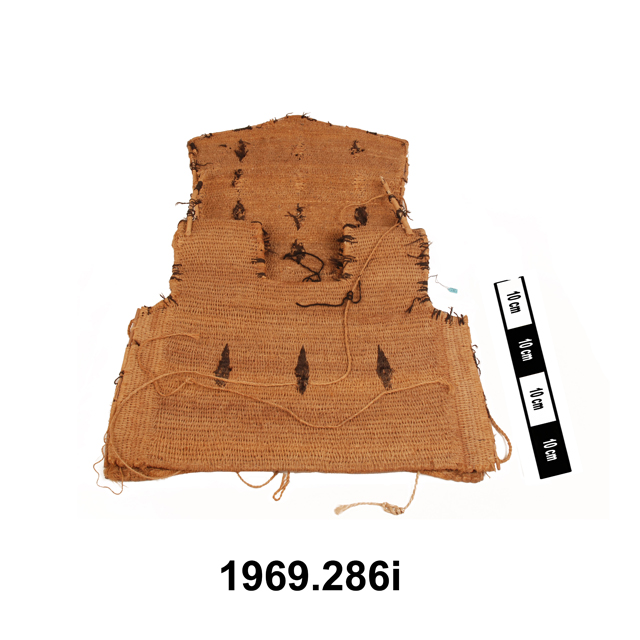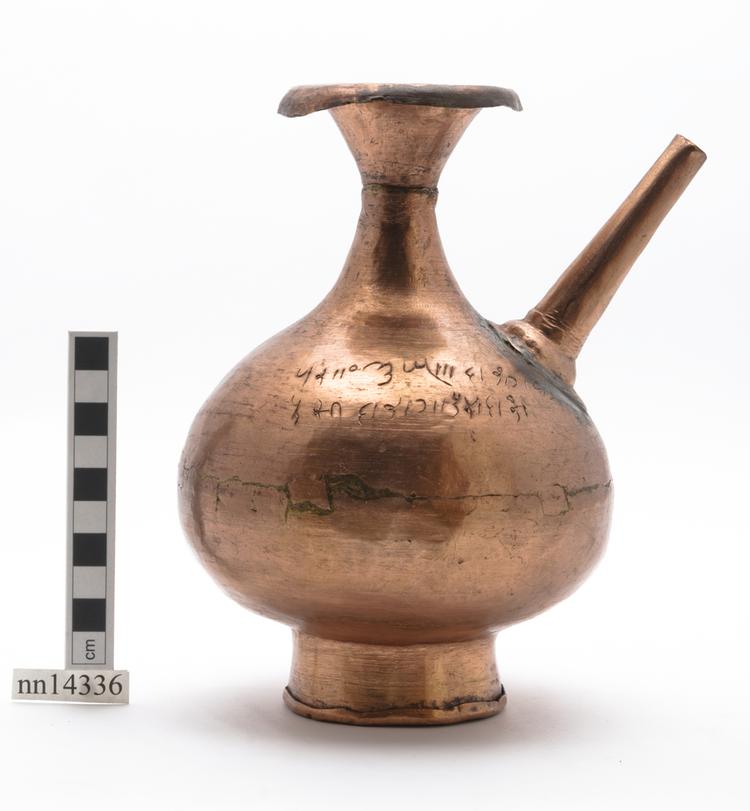

Pendant in the shape of a swastika. The wax base forms the support onto which the decoration made from twisted straw is mounted.
This type of straw and wax jewellery is known as 'l’or de Tombouctou' - Timbuktu gold - and it is imitations of gold jewellery found in Mali and across the Saharan region. This particular pendant in the shape of a swastika is referred to as the 'claws of the lion' in several languages of the region and is usually worn as a throat ornament, forming the central element of a neckchain (Garrard, 1989, pp 30, 152, 221). Due to the natural golden colour of the straw, this jewellery could, at first glance, have been mistaken for actual gold, especially as the designs imitate those of popular gold jewellery. The artist John Skolle mentions in his 1956 account of his travels in the Sahara that at the market in Timbuktu, '(t)here also were a few trays of semi-precious stones, relatively high in price (each worth several dollars) because they had been blessed in Mecca, and a necklace or two of the richest gold. Or was it? No. They were examples of filigree work in henna-stained straw over small shapes of wild bees’ wax, an ancient art of the Songhaï Negroes that is just about lost' (Skolle, 1956, p 198). Although Skolle described this as an 'ancient art', others (Lhote, 1946; Gabus, 1982) suggest that women only started to make gold imitation jewellery in the 1930s. Jean-Claude Müller, who assisted Jean Gabus in the research for the latter’s seminal work on jewellery across the Sahara, noted in a report from 1959-1960 that, due to the fragility of straw and wax jewellery, it would have been worn only for special occasions, and then more at night time. It would not last long if it were worn daily, especially not if exposed to the sun for long periods. There does not seem to have been a class connotation or social restriction to the wearing of straw jewellery, but Müller observed that it was popular with young women and those who could not afford its equivalent in gold. Müller states that in the past, straw and wax jewellery was well-made and was mostly worn by Songhaï women, whereas, at the time of his report, tourists had become the main clientele, and the jewellery less well-made. Moreover, to suit European tastes, the straw was being dyed in green, yellow and red (Gabus, 1982, p 306). See also 5.1.67/20 to 5.1.67/23 for similar straw and wax jewellery collected by Jean Jenkins.






